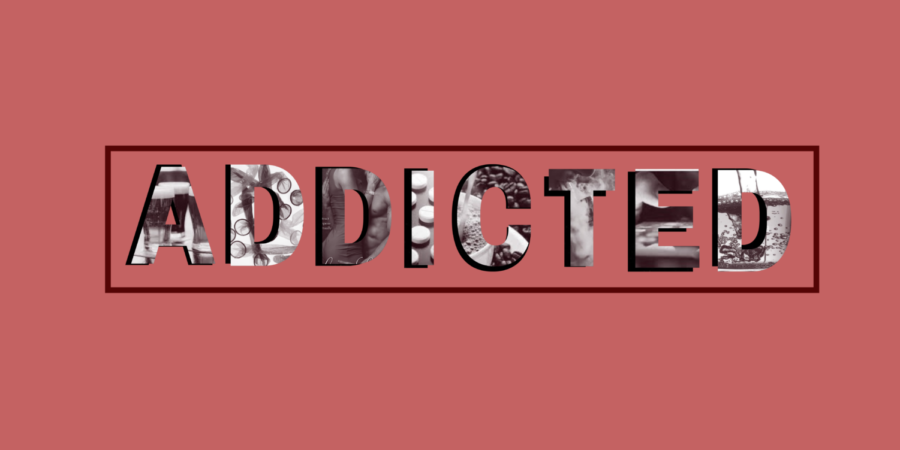ADDICTED: Alcohol
“ADDICTED” is a multi-part series that focuses on different addictions that college students face. From alcoholism to addiction to screens, “ADDICTED” will focus on a different form of substance use in each series installment.
September 18, 2022
“ADDICTED” is a multi-part series that focuses on different addictions that college students face. From alcoholism to addiction to screens, “ADDICTED” will focus on a different form of substance use in each series installment.
Shiv Patel had his first drink on his first night at Iowa State. Thinking back on that freshman year decision, Patel said after his first beer, all he could think about was getting more.
Now a fifth-year student studying computer and data science, Patel reflected on what his freshman year self thought college would be like. With “work hard, play hard” as his mantra, Patel said he had a romanticized view of college. Patel said he held the “delusional stigma” about college that many forms of media perpetuate; that college is all about sex, drugs and partying. He said while he knew he was at Iowa State to study, he was also here to party and “go crazy.”
While college is a pivotal point in many people’s lives concerning their future careers, memories and relationships, its atmosphere has also proven to be a hotbed for substance use and abuse. From Thursday’s “mug nights” to parties throughout the weekend, many college students find themselves engaging in the use of alcohol as a way to blow off steam and have fun.
Recognizing alcohol addiction
Shawn Dorius, an associate professor of sociology and demography at Iowa State, warns students about the dangers of automatically associating casual fun with alcohol.
“These associations get embedded when we’re in our formative years, and at the age of 18, 19, 20; we’re still very, very much wet cement or clay, and we’re being formed,” Shawn Dorius said.
Shawn Dorius said a habit is likely to be formed after associations between being social on the weekend and alcohol. While he said not everyone who drinks will become an alcoholic, he said these habits of substance use are what lead to progression down the road of substance dependence.

Patel said his drinking habits became more and more of a problem throughout his college years, becoming the friend who would be the drunkest at a party and drinking up to five days a week. But, he said realizing his habits were harmful was difficult, saying he would often find ways to justify his actions.
“And that is something that can take a lot of time to realize because, at least for me, my thought process was like ‘Okay, yeah, I got the most drunk out of everyone there really quickly. Like, okay, it was just one night. I was like, okay, all I have to do is just be mindful of my drinking,’” Patel said.
Patel said he realized he had an alcohol problem when he took a big picture look at his life. His grades were dropping, his weight was rising, his health was declining and his peers were distancing themselves from him.
Cassandra Dorius, an associate professor of human development and family studies at Iowa State, co-directs the Public Science Collaborative, a team of researchers who study different substance use trends, issues and factors in Iowa over time with Shawn Dorius. She said the rule of thumb for determining if an individual has a substance use problem is if they are not able to live their life the way they did before they started drinking. For example, she said if someone is unable to manage their relationships or responsibilities the same way they used to due to their drinking, there is likely a substance use problem.
“[The substance] slowly erodes the everyday quality of people’s lives,” Cassandra Dorius said.
Corrine Schwarting, a student in the counseling and psychology doctoral program at Iowa State, said it is also important to consider how frequently someone is drinking and the quantity of alcohol they are consuming each time they go out.
Schwarting used “mug night,” when many bars in the Ames area offer lower prices on drinks if an individual brings a mug, as an example. According to her, if an individual drinks one full mug, that is the equivalent of two to three normal-sized drinks. She said this person would be categorized as a low-risk drinker. On the other hand, if someone consumes just one more mug of alcohol, that shifts the drinking into the high-risk category.
Causes of alcohol addiction
Shawn Dorius said there are many reasons and factors to consider when determining why individuals develop substance use problems. He said they range from genetic factors, demographic considerations, someone’s age and social risk factors. But, above all, he said the biggest factor to consider is if a person is vulnerable.
The Dorius’ and their team of researchers at Public Science Collaborative study the factors that make individuals vulnerable to substance use disorders. From talking to people in recovery to the families of those who had a substance use disorder to first responders to different members of the police force, the Public Science Collaborative has compiled data that shows who is most vulnerable to developing substance use problems.
Shawn Dorius said one important factor in vulnerability is your external environment and exposure to the substance. He said the data the Public Science Collaborative has gathered from individuals who entered a substance recovery facility has proven that if someone lives in an area with a higher concentration of places where you can get alcohol, they are more susceptible to developing an alcohol addiction.
“The neighborhoods that have the highest prevalence of the at-risk or vulnerable population […] are also the neighborhoods that have the highest concentration of alcohol outlets,” Shawn Dorius said.
Cassandra Dorius added that other driving factors of addiction to consider are social isolation and stigma, trauma and economic vulnerability.
“You know, a lot of the folks that we’ve talked with have suffered serious trauma as a child, for example, or in their adult life,” Cassandra Dorius said. “And that’s one of the biggest reasons that people initiate substance use or re-entry into use later in their life. They go through these cycles of use and often it’s around traumatic events that have occurred.”
Matthew Voorhees is the residential program director at the Ames YSS, an organization that works with adolescents, families and adults on their recovery journey. Voorhees said these traumatic experiences could include the loss of loved ones, abuse, trouble in relationships or living in a broken or divided home as a child.
Shawn Dorius said if a student comes into the college environment with any of these vulnerabilities, they are at a higher risk of having a substance use problem. In fact, according to data from the Public Science Collaborative, nearly 65% of Iowa residents who entered into treatment in 2019 reported having at least spent some time at college.
“A lot of people end up in treatment with some [years of] college,” Shawn Dorius said. “They got to college, they brought those risk factors, and those vulnerabilities became huge risk factors because of the exposure.”
Path to recovery and sobriety
Patel said one of the most important parts of his journey to sobriety was his community. He said Alcoholics Anonymous and the Collegiate Recovery organization on campus were game-changers. Although, Patel said it took around six months to fully commit to the programs.
“I went for about maybe 10 [Alcoholics Anonymous] meetings before I finally decided to pick up a white chip and say, ‘Okay, like I’m ready to finally start trying to get sober,’” Patel said. “So I knew I had a pretty big problem, but it was a matter of committing to it [recovery].”
Voorhees said the sooner a person can start their recovery journey, the better the chances they have to become sober and not engage in harder drug use in the future.
“You know, the brain is so malleable and adaptable, especially through the age of 25,” Voorhees said. “And so if you can stop those habits and stop those routines and build new ones at a younger age; that’s incredibly helpful.”
Cassandra Dorius said one problem with people starting their recovery journey is that they think they need to wait until they hit rock bottom. She said people might think they will have more motivation to start recovery once they hit their lowest point. She warned individuals struggling with a substance use disorder to actively seek out help before it is too late.
Cassandra Dorius also said recovery and treatment can look different for everyone. According to her, the recovery centers in Iowa support an “all pathways approach,” which means there will be resources at each recovery center that will help the individual find the specific help they need, even if that looks different than what someone else needs.
Cassandra Dorius said there is a recovery pathway for everyone, whether it’s an inpatient or outpatient program, whether it involves religion or forms of exercise or whether it includes peer support group meetings.
“Because if you want it [recovery] to work, it has to work for you,” Cassandra Dorius said.
Schwarting said practicing intentional mindfulness can help when it comes to making the decision as to whether to drink or not to drink. She said an individual should ask themselves, “How is this serving me right now? How is this meeting a need of mine?”
Voorhees said YSS offers multiple different kinds of therapies and counseling to meet the needs of every individual who calls them or walks through their door. He said YSS is also in the process of building a new facility that will offer inpatient recovery spaces for college students that will allow them to recover while also attending school.
While there are many different forms and pathways to recovery that individuals can choose, Patel stressed the importance of community and not going through recovery alone. He said the amount of “mental gymnastics” a recovering addict has to go through will get easier with time and having a strong community.
Patel said attending Alcoholics Anonymous and learning their principles benefitted him in many ways.
“It hasn’t just helped me grow out of like, sobriety,” Patel said. “I feel like it’s actually helped me grow as a person. And that is mainly kind of what I guess I feel like a lot of my growth has come from.”
Resources
Iowa State Student Health and Wellness with Collegiate Recovery- https://www.studentwellness.iastate.edu/collegiate-recovery-community/
YSS- https://www.yss.org/
Signs of Drug Addiction- https://www.webmd.com/mental-health/addiction/signs-of-drug-addiction
Wellbeing Coaching through Student Wellness- https://www.studentwellness.iastate.edu/wellbeingcoaching/
Student Wellness Alcohol Harm Reduction and Prevention- https://www.studentwellness.iastate.edu/alcohol/
Recovery Ally Training through Student Wellness- https://www.studentwellness.iastate.edu/recovery-ally-training/#:~:text=In%20order%20to%20create%20an,them%20feel%20accepted%20by%20their

















